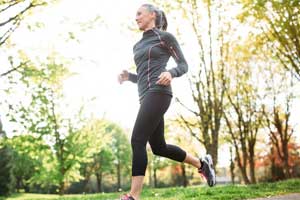- Home
- Editorial
- News
- Practice Guidelines
- Anesthesiology Guidelines
- Cancer Guidelines
- Cardiac Sciences Guidelines
- Critical Care Guidelines
- Dentistry Guidelines
- Dermatology Guidelines
- Diabetes and Endo Guidelines
- Diagnostics Guidelines
- ENT Guidelines
- Featured Practice Guidelines
- Gastroenterology Guidelines
- Geriatrics Guidelines
- Medicine Guidelines
- Nephrology Guidelines
- Neurosciences Guidelines
- Obs and Gynae Guidelines
- Ophthalmology Guidelines
- Orthopaedics Guidelines
- Paediatrics Guidelines
- Psychiatry Guidelines
- Pulmonology Guidelines
- Radiology Guidelines
- Surgery Guidelines
- Urology Guidelines
Leisure time running linked to low incidence of Diabetes

Various studies in the past have reported on the beneficial effects of higher levels or greater volumes of physical activity and exercise against T2D. Researchers examined the overall association as well as the dose-response relationship between leisure-time running and incident type 2 diabetes.
They have found that Leisure runners appear to have a lower risk of developing type 2 diabetes (T2D) than non-runners. There is a consistent linear dose-response relationship between various running parameters and incident T2D, which supports the recommendation of running to prevent diabetes. The study has been published in The American Journal of Medicine.
Out of these 1,015 developed T2D during a mean follow-up of 6.5 years. About 29.5 per cent of adults participated in leisure-time running at baseline. The risk of developing T2D was 28-per cent lower (hazard ratio [HR], 0.72, 95 per cent confidence interval [CI], 0.62–0.84) among runners compared with non runners during follow-up.
After adjusting for potential confounders, including levels of non-running aerobic physical activity, the HRs for T2D across quintiles of running time (minutes/week) was as follows: 0.98 (95 per cent CI, 0.75–1.28), 0.69 (95 per cent CI, 0.51–0.92), 0.62 (95 per cent CI, 0.45–0.85), 0.78 (95 per cent CI, 0.59–1.04) and 0.57 (95 per cent CI, 0.42–0.79). Similar dose-response relationships between running distance (miles/week), frequency (times/week), total amount (MET-minutes/week), and speed (mph) were also observed.
The researchers concluded that participating in leisure-time running is associated with a lower risk of developing type 2 diabetes in adults. Consistent linear dose-response relationships were observed between various running parameters and incident type 2 diabetes, supporting the prescription of running to prevent type 2 diabetes.
“We noted significant benefits of running with lower doses and intensities supporting the prescription of running to prevent T2D in adults, in addition to other healthy lifestyle behaviours,” the researchers said.
For further reference log on to
https://doi.org/10.1016/j.amjmed.2019.04.035

Disclaimer: This site is primarily intended for healthcare professionals. Any content/information on this website does not replace the advice of medical and/or health professionals and should not be construed as medical/diagnostic advice/endorsement or prescription. Use of this site is subject to our terms of use, privacy policy, advertisement policy. © 2020 Minerva Medical Treatment Pvt Ltd